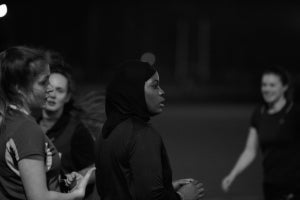
Aerobic vs anaerobic training for Rugby players
When you put on your rugby kit for the first training session of the season you, can probably look forward to a quick onset of muscle burn that makes early season training so tough. But is there a way to reduce that burning sensation and retain some of last season’s fitness longer?
In rugby training you’ll hear two terms bandied about with great regularity: aerobic and anaerobic. Each is important to your conditioning as a rugby player, but what is the difference and how does each contribute to your fitness? Hopefully this basic introduction will explain and help you stay fitter for longer.
The difference between aerobic and anaerobic
Put simply, aerobic means with oxygen while anaerobic means without oxygen. Generally speaking, those exercises that are performed at low intensity for long periods – walking, jogging, swimming, elliptical trainers and basically most exercises described as cardio activity – are aerobic. Exercises that get you out of breath quickly – lifting heavy weights, sprinting and so on – are anaerobic. (a note here: aerobic exercises performed at very high intensity can become anaerobic.)
During aerobic exercise, you are taking in enough oxygen to give the muscles the energy they need. The body gets rid of the waste by-products of aerobic exercise through respiration in the form of carbon dioxide and water. During anaerobic exercise, however, the muscles have insufficient oxygen and so break down sugar for energy, which leads to the production of lactic acid in addition to the carbon dioxide and water and, in turn, causes the burning sensation in the muscles.
The benefits of aerobic exercise
You can sustain aerobic activity for much longer without fatigue than anaerobic activity. If you train aerobically, you will gradually increase the threshold at which the activity becomes anaerobic and your muscles begin to burn, meaning that you will perform better for longer; the better your aerobic development, the easier your body deals with lactic acid build up allowing you to recover more quickly and keep going for longer.
Interestingly, the fitness gains made during an aerobic exercise regime are retained longer than those made in anaerobic exercise. This means that you stay fitter for longer, even if you have a lay-off for a while. Other benefits of aerobic exercise include the prevention of chronic diseases, reduction in stress and general improvement in health.
The benefits of anaerobic exercise
During anaerobic exercise (prime examples include lifting weights and sprinting) your body quickly reaches a ‘metabolic threshold’, when oxygen can no longer supply the energy it needs so it uses sugar and produces lactic acid as a by-product. The accumulation of lactic acid causes fatigue and that burning sensation in your muscles. If you turn a jog into a sprint, you’ll quickly discover that you cannot sprint for very long without rest because of the discomfort caused by the lactic acid.

While anaerobic activity is difficult to sustain, it is important for your health, as it builds lean muscle and increases bone density. As a rugby player, you need to perform anaerobic exercises to increase your body mass and to give you strength and explosive power.
Which is best for you?
For rugby players, a combination of aerobic and anaerobic exercise is the key to great conditioning. Every player is different, so your coach will design a programme that best suits your needs. As a rule of thumb, all you need to remember is that aerobic exercise will give you sustained fitness and help delay the onset of muscle burn while anaerobic exercise will help build body mass, muscle and power.

Related Articles








